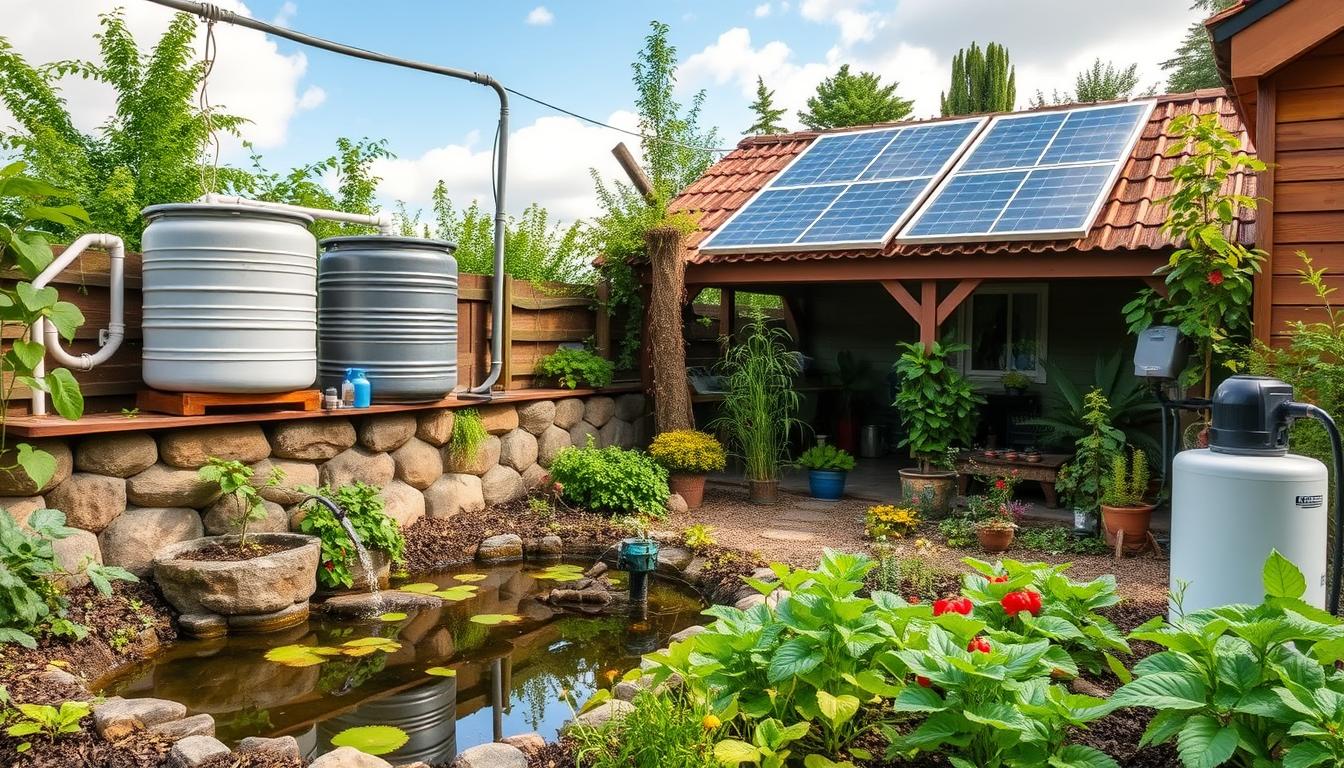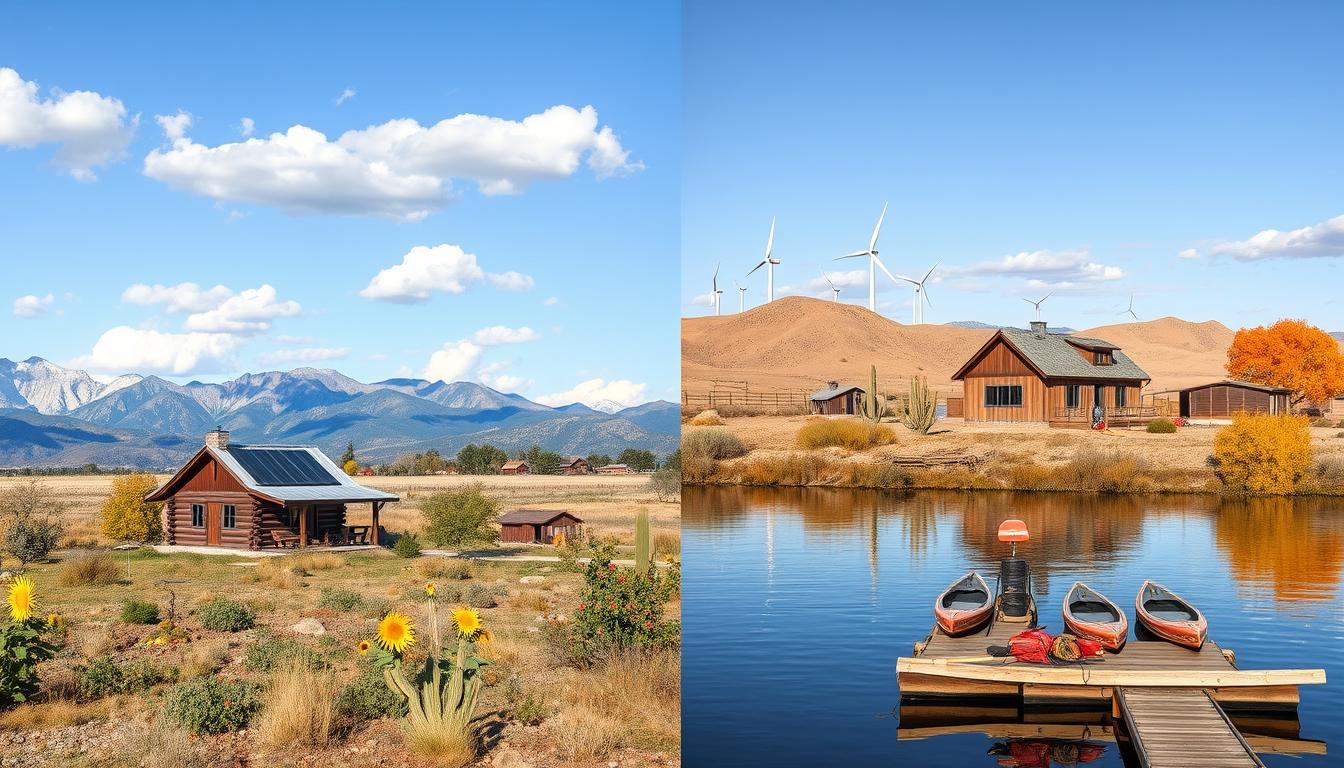In today’s unpredictable world, having access to safe drinking water is crucial for survival. This guide will cover key water purification methods. These methods can save lives when regular water sources are not safe. You’ll learn about boiling, chemical disinfection, and portable filtration.
These strategies help keep you hydrated and safe from water-borne illnesses in emergencies. By the end, you’ll know how to keep your water clean and safe.
Key Takeaways
- Understanding the importance of safe drinking water for health and survival
- Exploring various water purification techniques, including boiling, chemical disinfection, and portable filtration
- Discovering how to utilize the power of sunlight for water purification through the SODIS method
- Learning DIY water purification methods using sand, gravel, and other household materials
- Preparing for emergencies by properly storing purified water in suitable containers
Importance of Safe Drinking Water
Having access to safe, clean drinking water is key to survival, especially in emergencies. Drinking contaminated water can lead to serious illnesses. These illnesses can quickly become deadly, making it vital to purify water and be prepared.
Water-Borne Illnesses and Their Dangers
Diseases like cholera, dysentery, and typhoid spread fast through dirty water. They cause severe dehydration, diarrhea, and can be deadly if not treated. It’s crucial to purify water before drinking it to avoid these illnesses.
Hydration and Survival in Emergency Situations
Staying hydrated is key to staying healthy and strong in survival situations. Dehydration can make you tired, give you headaches, and weaken you. Having access to clean, purified water is a must for survival and can save lives.
“In a survival situation, clean water is the most important resource for maintaining health and ensuring successful outcomes.”
Boiling: A Simple and Effective Method
Boiling water is a simple and effective way to purify it for survival. This method kills harmful microorganisms, making it safe to drink in emergencies or when you’re preparing for something.
To boil water, just bring it to a rolling boil and keep it there for at least one minute. This makes sure all harmful germs are killed.
Boiling is great because you don’t need special gear or chemicals. It’s a cheap and easy way to make water safe, even in tough places.
But, boiling won’t get rid of all contaminants like heavy metals or chemicals. Sometimes, you’ll need to use other methods to make the water safe to drink.
“Boiling water is one of the most effective and reliable methods for purifying water in survival or emergency situations.” – Survival Expert, Jane Doe
Boiling is a strong and reliable way to purify water for survival and preparedness. It’s easy, accessible, and works well. It’s a top choice for making drinking water safe in any situation.
Chemical Disinfection: Chlorine and Iodine
Chemical disinfection with chlorine or iodine is a top choice for making water safe. These chemicals kill many harmful germs in water. Knowing how to use chlorine and iodine is key for emergency preparedness.
Using Household Bleach for Water Purification
Household bleach is a simple way to clean water. It’s cheap and effective in emergencies. Just make sure to use the right amount and wait long enough for it to work.
To purify water with bleach, follow these steps:
- Add 8 drops of bleach per gallon of clear water (or 16 drops per gallon for cloudy water).
- Stir the mixture and let it stand for 30 minutes before consuming.
- The water should have a slight chlorine odor, indicating that it has been properly treated.
Remember, bleach’s chlorine strength can change. Always use the right amount. Too much bleach can make water dangerous, and too little won’t kill germs.
“Chemical disinfection is a crucial tool in your survival water purification arsenal. Chlorine and iodine can quickly make contaminated water safe for consumption, essential during emergency situations.”
Survival water purification: Portable Water Filters
Portable water filters are a must-have for keeping water safe and clean in survival situations. They are compact and lightweight, making them easy to carry anywhere. Whether you’re out hiking, camping, or in an emergency, a good portable water filter can keep you hydrated and safe from waterborne illnesses.
There are many types of portable water filters available, each with its own set of features. You can find everything from simple straw-like filters to advanced pump systems. When picking a filter, think about how well it works, how fast it filters water, how long it lasts, and how easy it is to use.
Types of Portable Water Filters
- Gravity-fed filters – These filters use gravity to clean water, making them ideal for groups or long-term use.
- Pump filters – You need to pump these filters manually, but they can clean more water quickly.
- Straw filters – These are small, easy to carry, and perfect for one person or emergencies.
It’s important to take care of your portable water filter to keep it working well. Read the instructions from the maker and clean or replace the filter when needed.
“Having a reliable portable water filter can mean the difference between staying hydrated and risking waterborne illnesses.”
Buying a top-notch portable water filter is a wise move for survival water purification and preparedness. With the right filter, you can handle any water problem and stay hydrated, no matter the situation.
Solar Disinfection (SODIS): Utilizing the Power of Sunlight
SODIS is a simple way to purify water using sunlight. It’s a cost-effective method that kills harmful germs in water. This makes it a key tool for emergency situations.
Principles and Effectiveness of SODIS
SODIS uses the sun’s UV rays to kill germs in water. This includes bacteria, viruses, and protozoa that can make people sick. Studies show it can cut down the risk of getting diarrhea by up to 70%.
To do SODIS, fill clear plastic bottles or bags with water. Leave them in the sun for at least 6 hours. If it’s cloudy, leave them out longer. The sun’s UV rays will kill the germs by breaking their DNA.
“SODIS is a simple, low-cost, and effective method for preparing safe drinking water, especially in areas where conventional water treatment is not available or feasible.”
SODIS is great for remote or disaster areas without electricity. It uses the sun to make clean drinking water. This is crucial in tough situations.
SODIS might take longer than other methods, but it’s still important for preparedness. Knowing how it works gives you peace of mind. You can always have clean water, even when it’s most needed.
DIY Water Purification Techniques
DIY water purification techniques are key for getting safe drinking water in emergencies. Sand and gravel filtration is a simple yet effective method. It uses common materials to clean water, making it a top choice for emergency preparedness.
Sand and Gravel Filtration
Sand and gravel filtration is a budget-friendly way to purify water for survival. It uses the natural filtering abilities of sand and gravel to remove many contaminants. This makes it a great tool for emergency preparedness.
Here’s how it works:
- Start with a clean container, like a bucket or a big jar. Put coarse gravel at the bottom.
- Next, add fine sand on top of the gravel, then coarse sand on top of that.
- Pour the water to be purified into the container. Let it filter through the sand and gravel slowly.
- After filtering, you might need to treat the water more. Use boiling or chemicals for this.
This method is great at removing particles, bacteria, and some viruses. It’s a dependable way to purify water in emergencies.

“DIY water purification techniques like sand and gravel filtration can be a game-changer in emergency situations, providing a reliable and cost-effective way to ensure access to safe drinking water.”
Water Purification Tablets and Drops
In survival situations, getting clean drinking water is key. Water purification tablets and drops are a handy way to make water safe. They are small, light, and crucial for staying safe when clean water is hard to find.
These products have ingredients like chlorine dioxide or iodine. They kill harmful germs, viruses, and tiny bugs in water. Always follow the instructions on the package to use them right.
- Chlorine dioxide tablets kill many germs and don’t change the taste much.
- Iodine-based tablets might taste a bit different but work well too.
Water purification drops, like those with sodium hypochlorite, also clean water. Just add them to the water and wait for the time suggested to kill germs.
“Having water purification tablets or drops in your survival kit can make the difference between staying hydrated and potentially falling ill from contaminated water.”
Always use these products as the maker says to. Wrong use can make the water not safe. With some prep and the right tools, you can always have safe water in survival situations.
Distillation: A Time-Consuming but Effective Process
Distillation is a top choice for survival water purification. It removes many contaminants like biological and chemical pollutants. This method takes time, but it’s key for preparedness plans.
The process boils water and then collects the steam that condenses, leaving out impurities and minerals. This method is great for getting rid of harmful substances. Water distillation is especially good at removing bacteria, viruses, heavy metals, and some chemicals.
“Distillation is one of the most reliable methods for purifying water in emergency situations, even though it requires more time and effort than some other techniques.”
To make a basic water distillation setup, you need a heat source, a boiling container, and a condensing unit. This could be as simple as a pot with a lid and a hose or tubing for the steam.
Distillation takes time, but having safe, clean water in a survival situation is worth it. Adding this to your preparedness plan means you and your loved ones will have access to clean water for survival water purification.
Prepardness: Storing Purified Water for Emergencies
Storing purified water right is key to survival. Having a steady supply of clean water can save lives in emergencies. This guide will help you pick the best containers, keep water fresh, and get your home ready for surprises.
Selecting and Maintaining Water Storage Containers
Choosing the right containers for water storage is vital. Go for food-grade plastic or stainless steel ones made for water. Don’t use containers that held chemicals or other non-food items. Keeping them clean and replacing them when needed is important to avoid contamination.
- Choose food-grade plastic or stainless steel containers
- Avoid repurposed containers that held non-food items
- Clean water storage containers regularly
- Replace containers when they show signs of wear or damage
Storing water properly is a critical component of survival preparedness. By investing in the right containers and maintaining them diligently, you can ensure your family has access to clean, safe drinking water in any emergency situation.

Conclusion: Ensuring Safe and Clean Water in Any Situation
When emergencies or natural disasters hit, having safe and clean drinking water is crucial. This article has shown you various ways to make sure your water is clean. You can use boiling, chemical disinfection, portable filters, or solar disinfection.
Now, you know how to purify water in different situations. These skills are vital for your health and the safety of your family and community. They help you stay safe and strong.
Being prepared is very important. Add these water purification steps to your emergency plan. Keep the right supplies ready for any situation. This way, you’ll always have clean water to drink, even when things get tough.







